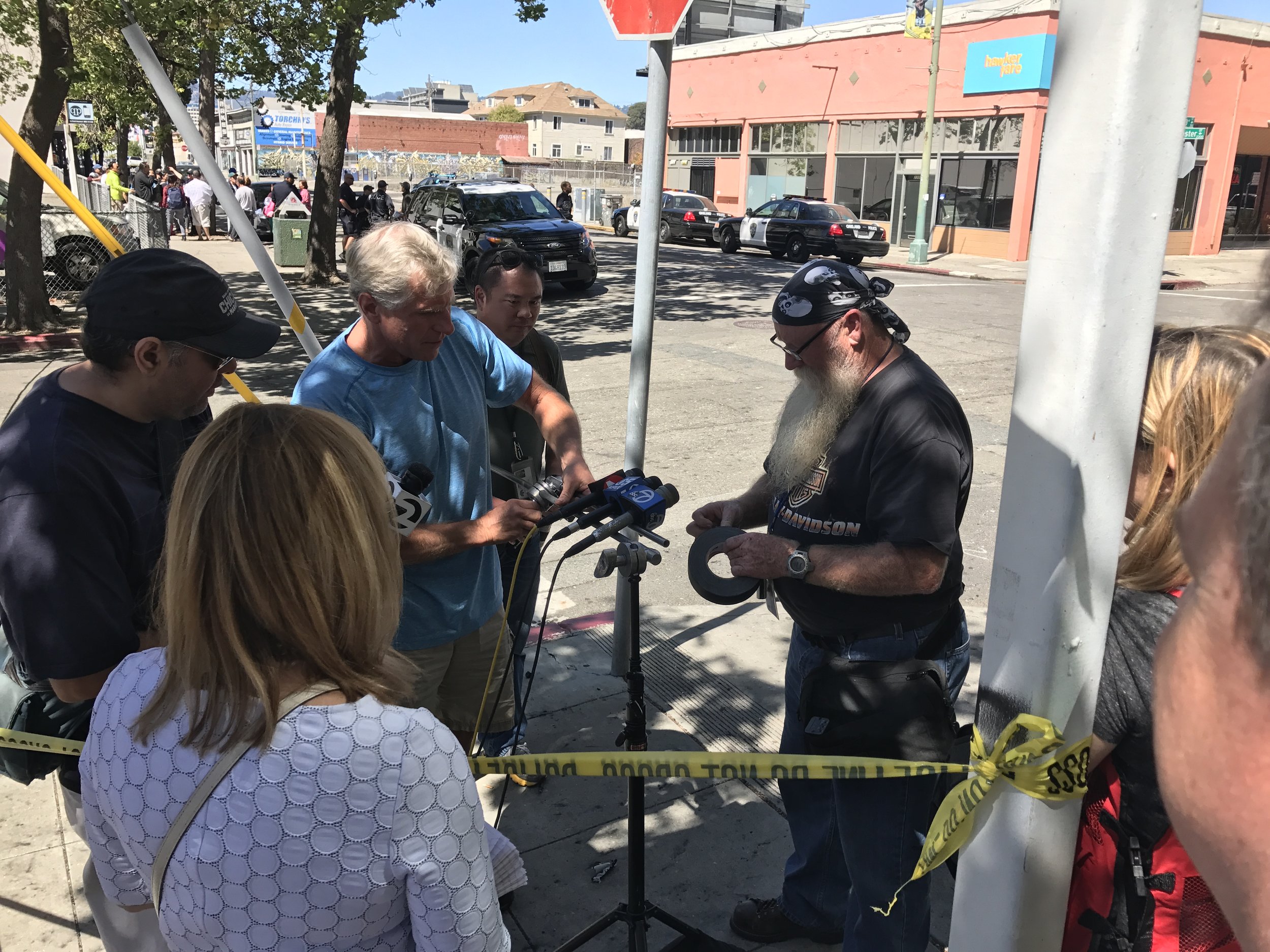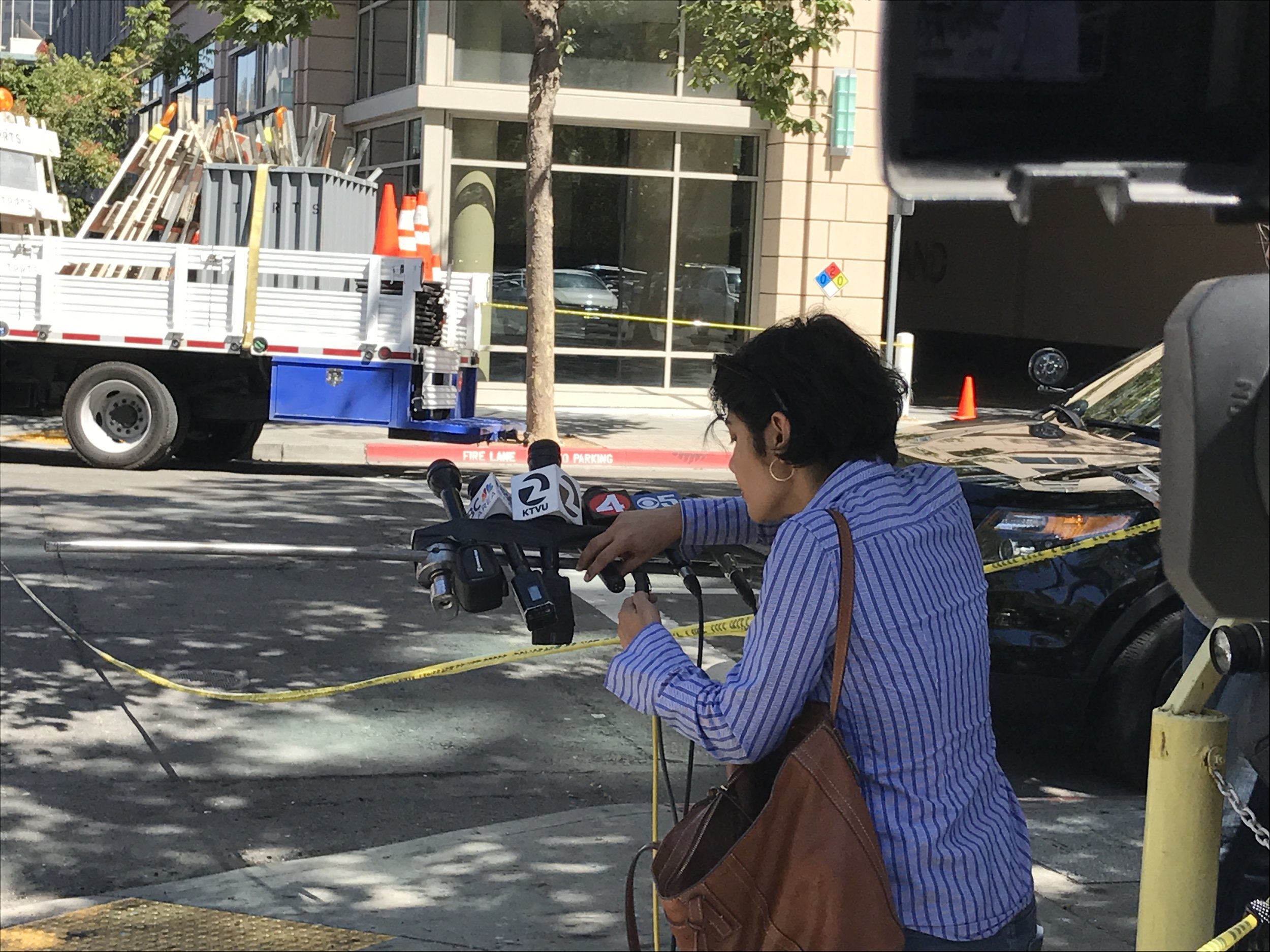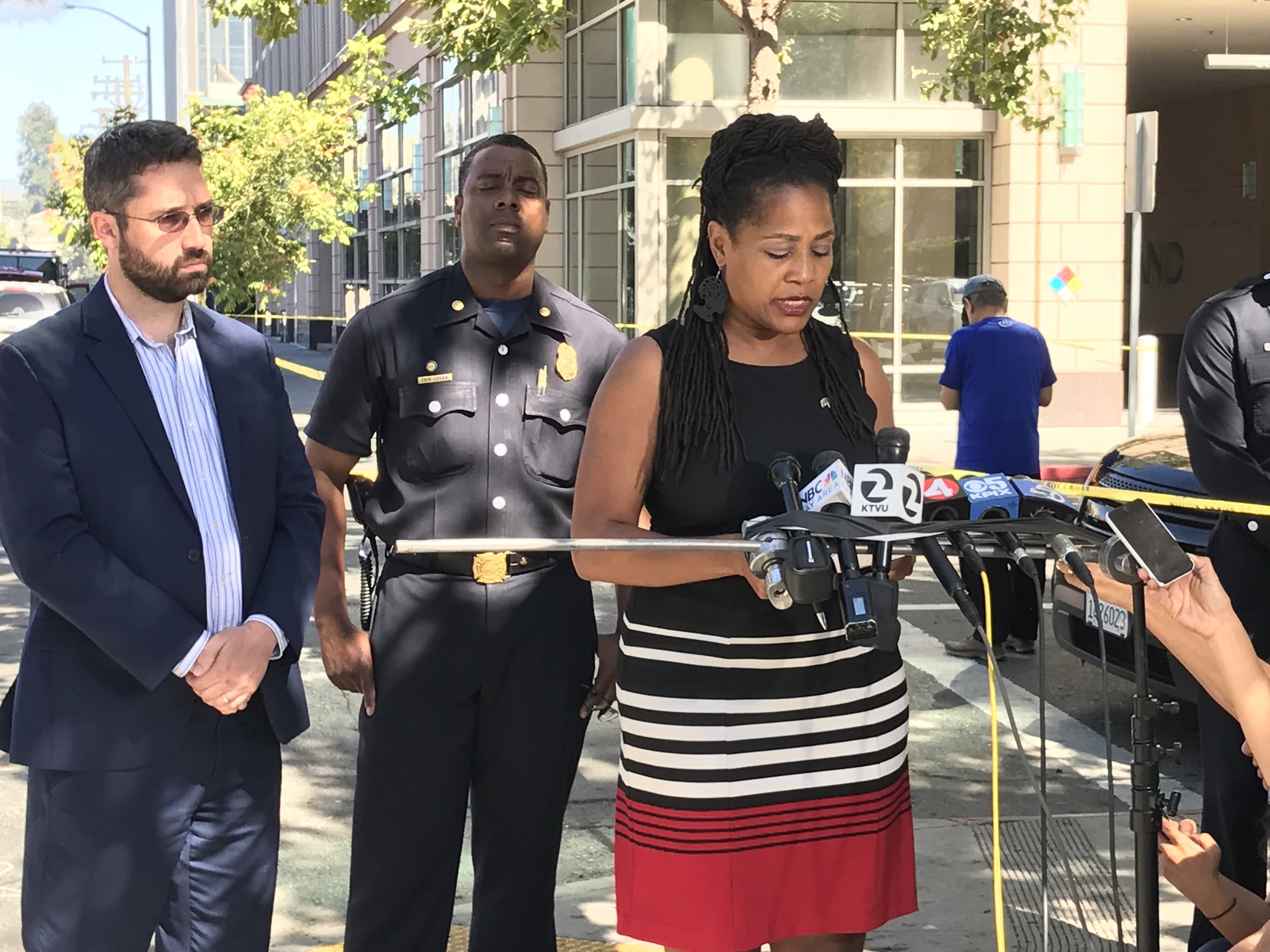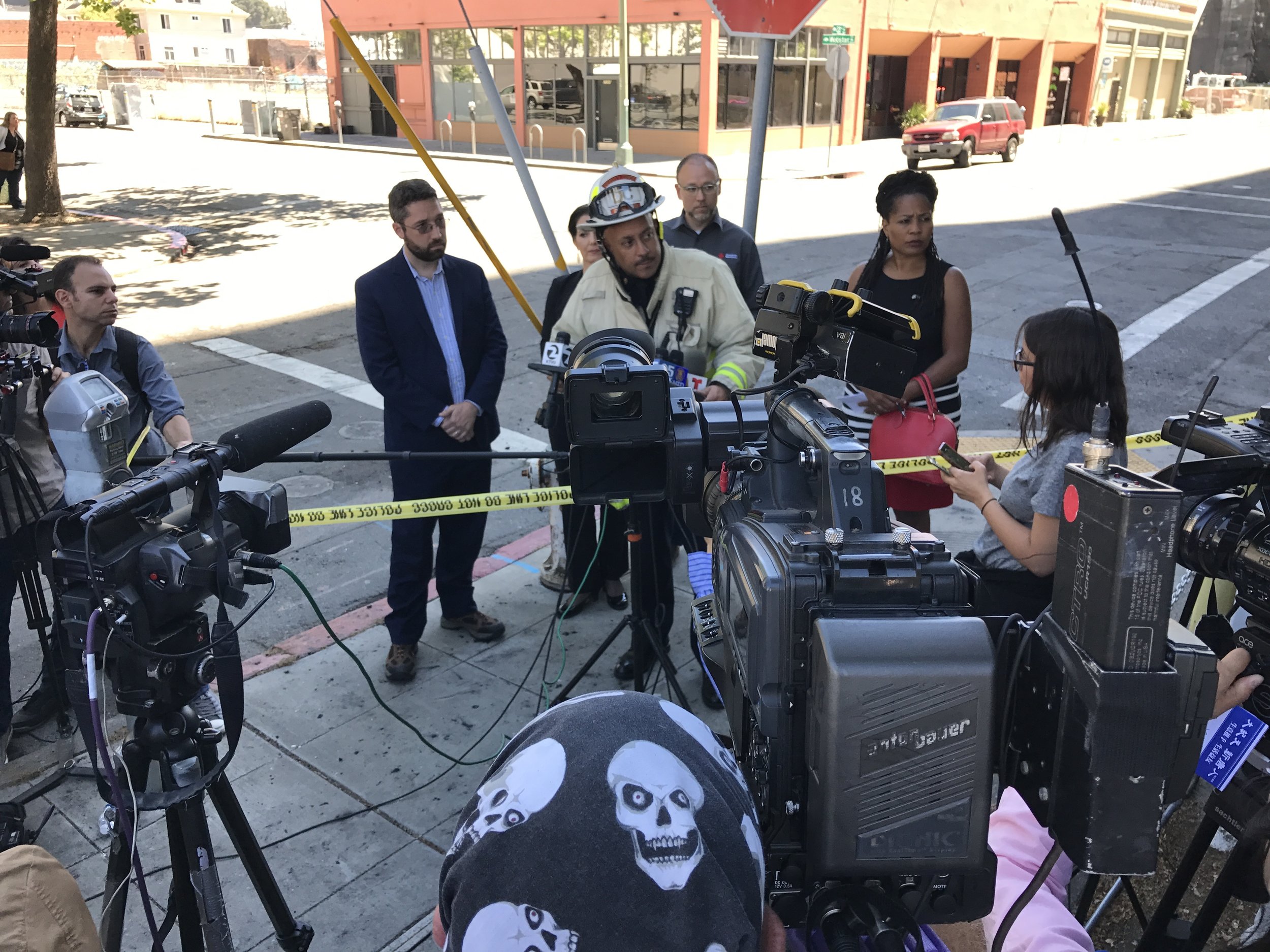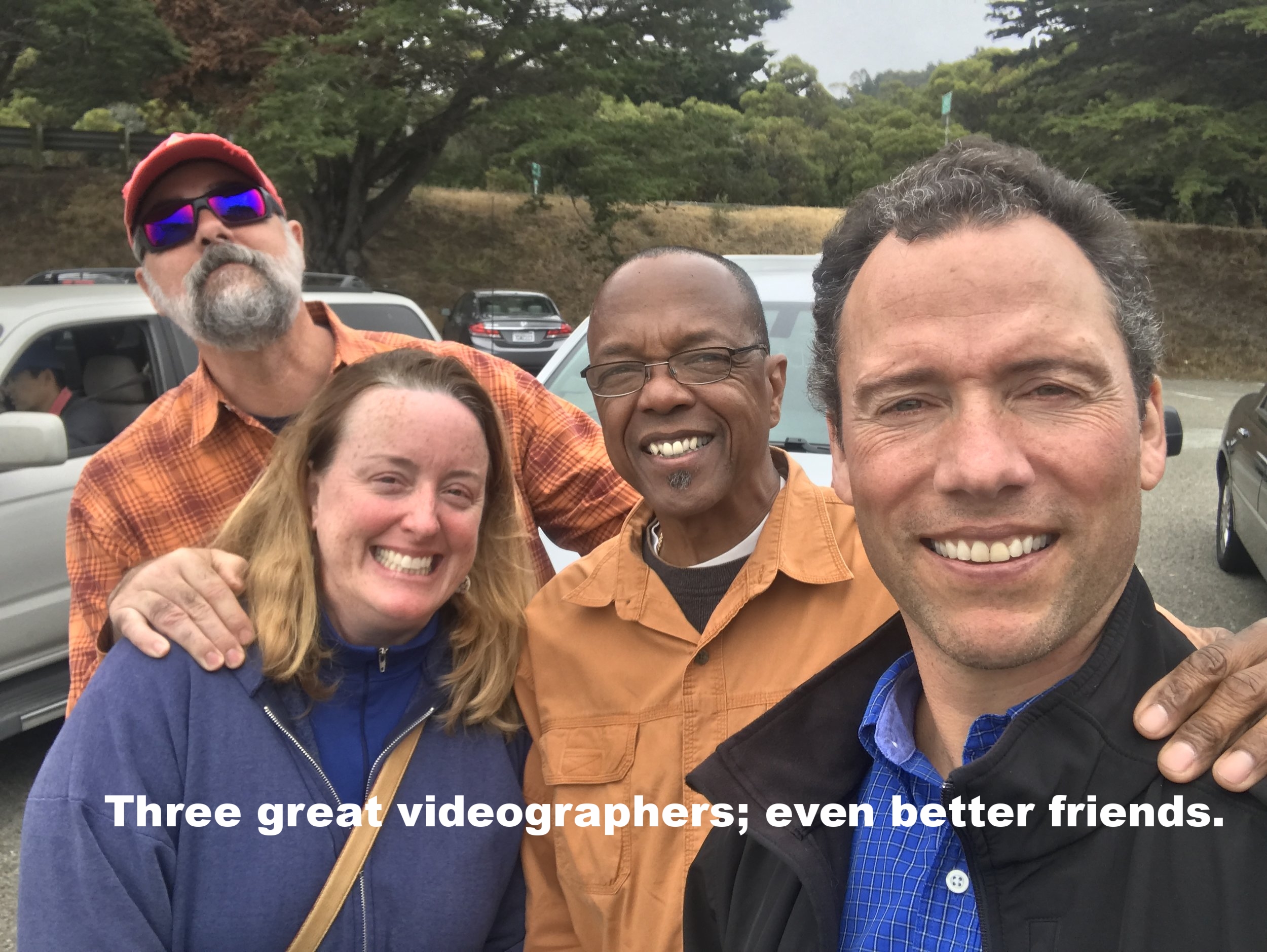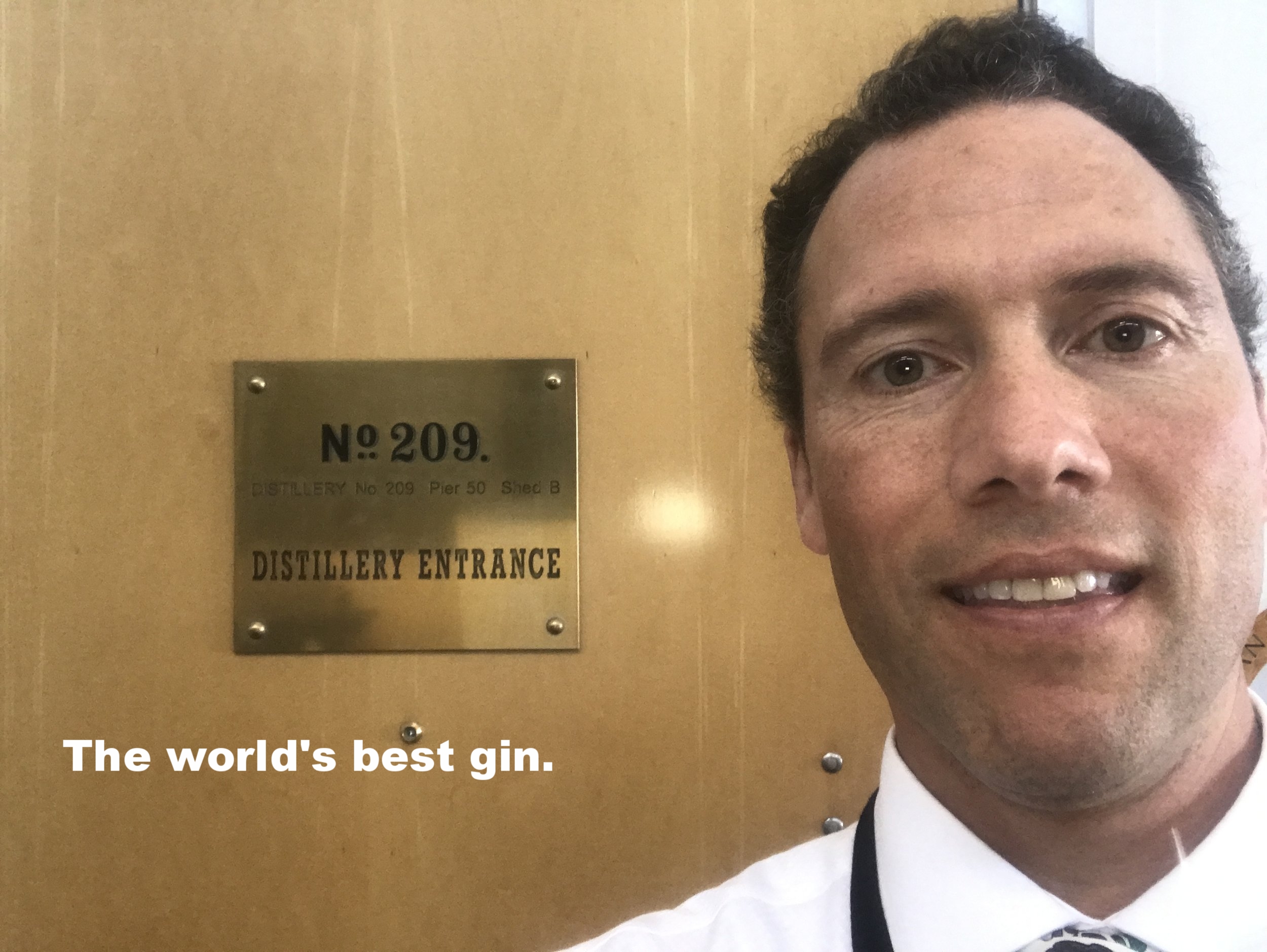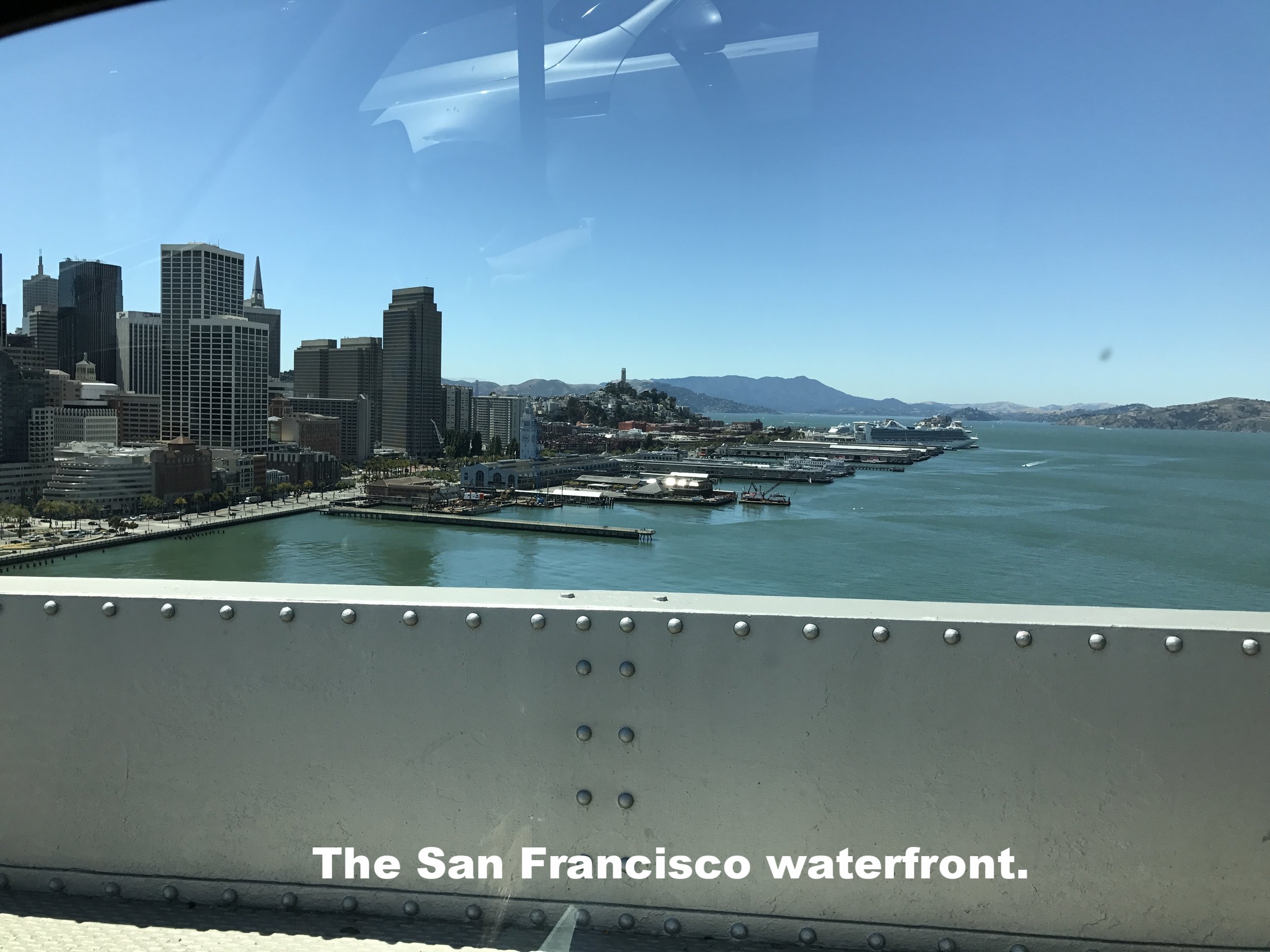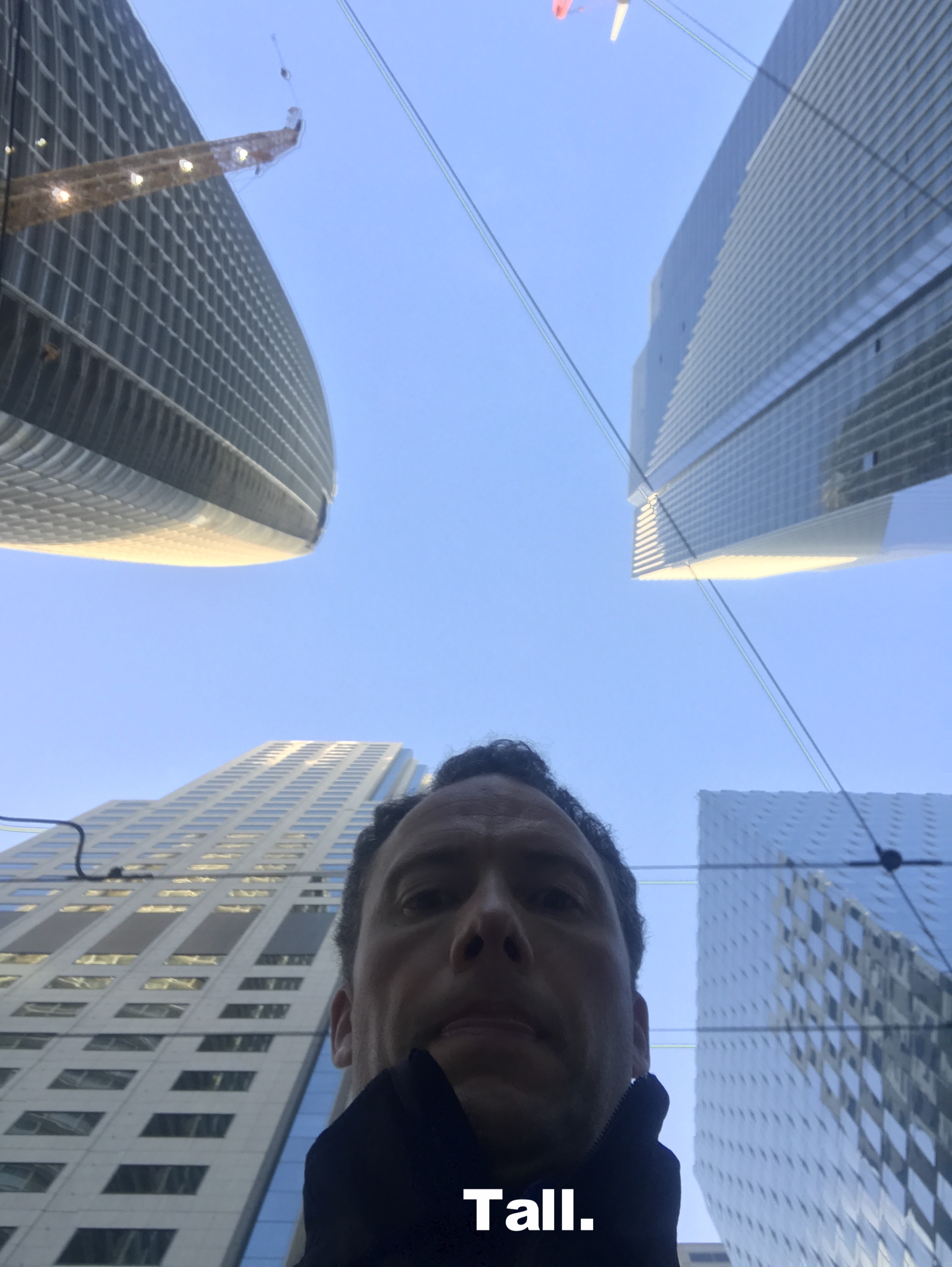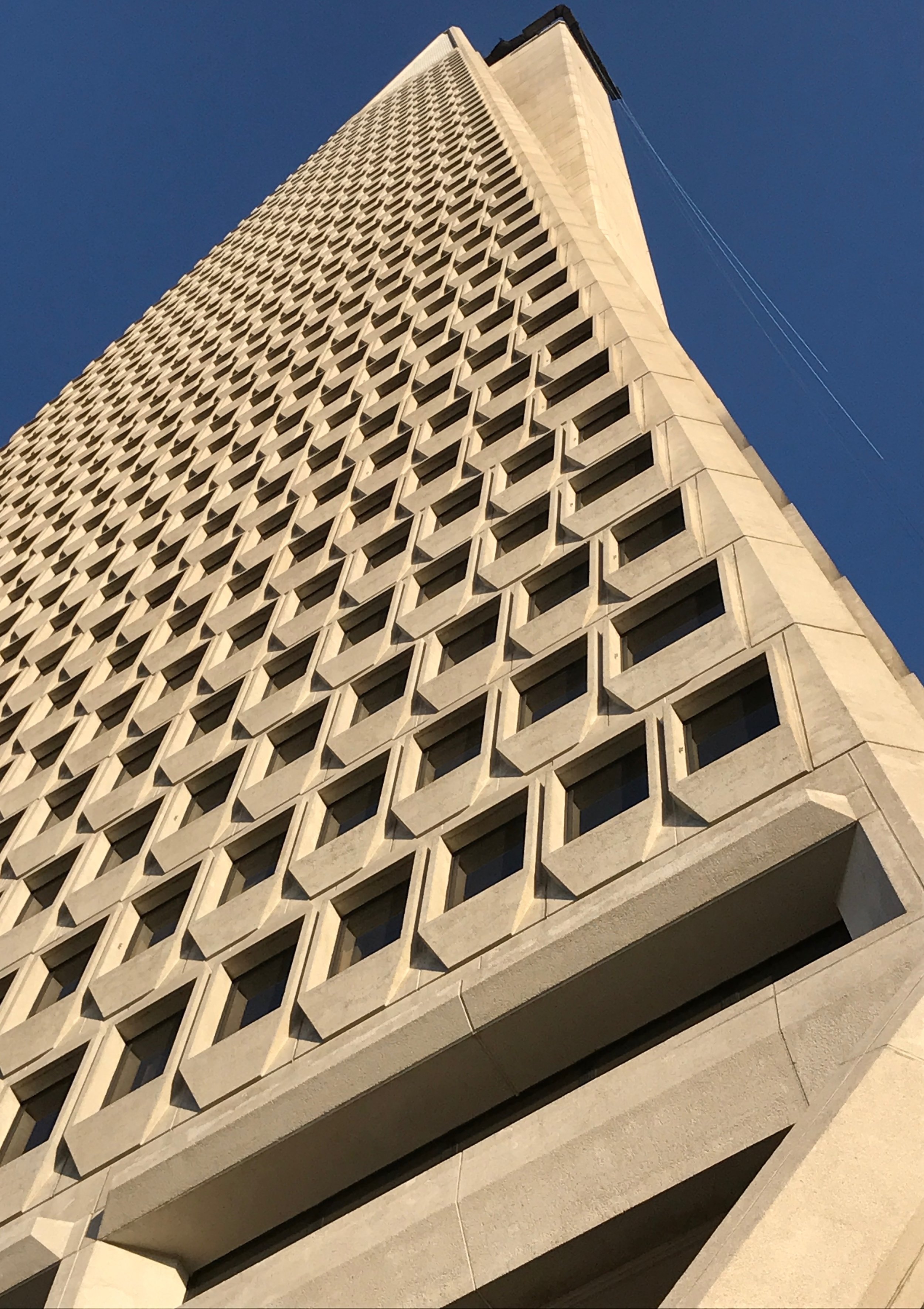Now that's a fire!
Facing down deadline pressure is a thrill. Stressful, but still thrilling as you debate each and every decision you make, trying to figure out what is the most you can do and still come in on time. The right call means success, the wrong call and you face recriminations. Missing deadline is the non-negotiable, cardinal sin of TV news.
Today's story was continuing coverage of the devastating fire that consumed a still-under-construction apartment building in Oakland. The first call came in to 911 at 4:30 a.m., the fire fighters were still there well into the afternoon.
The three elements I tell my students are essential to TV stories are:
- So what (what difference does it make): besides being a huge fire that forced the evacuation of nearly 1,000 people in the neighborhood, this also was the fourth fire to demolish an apartment building under construction. Perhaps the work of anti-gentrification activists? Arson?
- Real people (the people living the story): the people displaced and witnesses.
- Show me don’t tell me (video): the fire.
By the time I got to the scene, the towering flames had been reduced to smoldering puffs of smoke. That meant I needed to rely on the video shot early in the morning. The video I could have shot just didn’t compare. Sometimes, MMJs must recognize who’s shot the best video, and use it. That meant downloading all the morning show video from the server and taking it with me.
While this might seem an advantage (hey, I don’t have to pull out the camera and tripod and shoot more video), it’s also got some limitations. When you use someone else’s video, you don’t really have a feel for the flow of the story, where the best sound bites are, which shot would make for the perfect open and the perfect close. Conversely, when you shoot your own video, which all MMJs do, you have an intimate knowledge of all those things, you can just feel what’s right. Still, if you must use someone else’s video, make sure you log it – watch all of it so you can ensure your story doesn’t miss the best shots someone else got.
My assignment was to go live at the top of the 5 p.m. and 6 p.m. newscasts, with a different package in each. A tall order, but doable. The key was managing the stress and making decisions that would help me make deadline. Have a plan:
- Review and label all the file video early in the day so when it came time to edit, I knew which were the best shots and where to find them.
- Finish the 5 p.m. package early. With a press conference called for 4 p.m., I had a decision to make - how to be at that press conference and go live with a story in the 5 p.m. show. I didn't know when the 4 p.m. press conference would end, so waiting to put a story together afterwards was too risky. What if it finished at 4:45 p.m.? The solution was to finish and feed back the 5 p.m. package to the station before the press conference. Yes, my package didn't have the latest information, but I did include it in the live intro and tag. Much less stressful. Also, because the 5 p.m. package was already finished, the minute the 4 p.m. press conference was over, I could start working on the 6 p.m. package and make it different.
- The order of events:
- edit 5 p.m. package
- attend 4 p.m. press conference
- write 6 p.m. package
- do 5 p.m. live shot
- edit 6 p.m. package
- do 6 p.m. live shot
The transcription is pretty bad, but you can see the time of the call for all hands on deck.
Deadlines arrive at different times depending on which shift you work: morning, dayside, nightside. They become part of your daily routine - until breaking news strikes. At that moment, there is no shift. Everyone should be ready to go. I’d forgotten that. Each night in my non-TV job, I put my phone on “do not disturb.” Who would need to contact me at 5:30 a.m. about homework? But in TV, it might be the assistant news director calling you to say, “There’s a HUGE fire in Oakland. Can you go? Now!” I didn't answer that call because I, and my phone, chose not to be disturbed. In the end, it wasn’t a big deal, because the morning show crews had it covered. But it’s still a reminder how TV news is different from other professions. If it’s a big enough story, “do not disturb” isn’t an option. In fact, if it’s a big story, the good journalist should be hoping for a call, happy to be woken up for work.
On breaking news stories such as this fire, it’s common for the authorities to hold periodic press conferences with updates for the public. Today’s happened at 7:30 a.m., 11:30 a.m. and 4 p.m. The broadcast media reaction to these events is an interesting combination of jockeying for the best position and cooperation to try to make sure everyone gets good video and audio. In this series of photos, you can see the videographers from competing stations working together to set up a stand to hold all the microphones. Cooperation – we’re all trying to get the same thing so let’s make it easier on all of us. Later, you can see the press conference happening with the interim fire chief talking. Notice how all the different cameras have staked out their positions. Woe to the latecomer who tries to squeeze in front of an already established shot. At this point, competition is fierce.
Big stories often result in team coverage; several reporters covering different angles of the same story. When that happens, it’s imperative each person understand his or her role in the newscast. Today, for the 5 p.m. newscast, I was the lead reporter, covering the “nuts and bolts” of the story. “Nuts and bolts” (also known as “hits, runs and errors”) means telling the story of what happened and no more. Not the background, not the controversy, not the big-picture comparison to other locations or events. For example, at 5 p.m., my producers clearly explained my “nuts and bolts” should include the fire reaction, the potential of arson and drawings of what the burnt building would have looked like, but not include information about evacuations because another reporter was covering that angle. At 6 p.m., another reporter at the scene covered the potential arson angle and the drawings were presented by the anchors, so I had to delete those parts from my story. Team coverage works great when there’s no repetition among the stories and the progression from one story to another is seamless. The key to all this is communication, between the newsroom and the field, and in the field among reporters.
That’s it for “back in the saddle” 2017. A big thanks to the management at KPIX that continues to welcome me back and help me succeed. The opportunity is priceless. Here are a few parting shots of good times and pretty views from my two weeks here.
Coit Tower colors.
Takeaways:
- If you have to use video someone else shot, review it as soon as you can. It’ll ensure you use the best stuff and help you edit more quickly.
- Answer the phone. You want to get the call to come in early or stay late. That means you’re trusted with the big story.
- The press conference can turn into a scrum. Know your place. Stake out your place early.
- Team coverage succeeds when each person knows his or her role.



